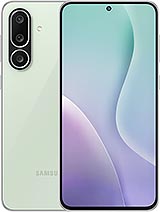Flashback: the Nokia N86 8MP was the last of the great Symbian sliders

The Nokia N95 was a high point for Symbian, but as we noted in our previous Flashback article, its success was never replicated. It was also the end for this form factor – the Swiss army knife slider phone.
The original N95 came in early 2007, followed a few months later by the much-improved N95 8GB. Our destination for today’s story is the N86 8MP, but we have to take a twisty path to get there.
2007 also brought the more affordable Nokia N81. It launched in two versions – one with basically no built-in storage but with an included 2GB microSD card and one with 8GB of built-in storage but no microSD card. They were priced €360 and €430 before taxes, respectively. For comparison, the Nokia N95 8GB was €560 before taxes.
8GB was quite big for the era, when the original iPod launched in 2001 it had 5GB memory and was advertised as having “1,000 songs in your pocket”. So, the N81 8GB could keep dozens of CDs of music and plenty of photos too.




8GB was plenty of storage for music and videos
Not that the phone had a particularly good camera, a disappointing 2MP sensor (no AF) with LED flash and 320p @ 15fps video recording. That was nothing like the 5MP camera with Carl Zeiss optics and 480p @ 30fps video that the flagship Nokia N95 had to offer.




The less said about the camera, the better
That wasn’t all that the N81 had to offer, the phone was part of the N-gage family, which made it a sort of gaming phone. An awkward gaming phone as that D-pad really didn’t cut it. And the 2.4” 240 x 320px display was decent, but again fell short of what the N95 had on board (2.6” for the original and 2.8” for the N95 8GB).




Nokia N81 and Nokia N85gsmarena_01
A year later came the Nokia N85 with a price tag of €450 before taxes. This was Nokia’s first smartphone with an AMOLED display – a 2.6” panel with the familiar 240 x 320px resolution. The Finns used AMOLED on a few other models, but those were artsy feature phones like the Nokia 8800 Arte and the Nokia 7900 Prism.




The inky blacks of Nokia N85’s AMOLED display were a sight to behold
The N85 was overall a massive upgrade. The unique display was certainly the highlight, but the phone was also upgraded to a 5MP with Carl Zeiss optics with autofocus this time and proper 480p @ 30fps video capture.




The new 5MP camera was so much better
This model caught up to the N95 in other ways too, e.g. it had a GPS receiver. The pre-installed Nokia Maps offered three months of voice-guided navigation for free (something that was still a paid feature back then).




Navigation in the age before Google Maps went mobile
And even the phone itself had a dual-slider design like the N95, meaning that sliding it one way revealed the keypad, sliding it the other showed multimedia controls.




The Nokia N85 adopts the dual slider design
Speaking of multimedia, the N85 also featured stereo speakers like its bigger brother. Instead of dividing the phone into two models (one with 8GB storage and one with a microSD slot), the Finns decided to just package an 8GB microSD.
Before we get to the N86, we have to cover the successor to the N95 – the Nokia N96. This was supposed to come out in early 2008, but delays pushed that back to September. It managed to get pricier, €550 before taxes, and it felt underwhelming for Nokia’s traditional Symbian flagship (the company was trying to graft a touch UI to the OS, but that didn’t work out well). The model for the US was a whopping $900, which is pricey for a phone even today, never mind back in 2008.




The Nokia N96 was way overpriced
Let’s just say that the N96 didn’t do so well in the market. In case the timing has eluded you, the iPhone 3G launched in 2008. It was available with heavy subsidies from AT&T so an 8GB model was $200, a 16GB one was $300. A year later the iPhone 3GS came with no-contract prices of $500 for the 8GB model and $550 for the 16GB one. $900 for a no touchscreen Symbian phone was delusional.
And with this we reach our destination – the Nokia N86 8MP arrived in 2009 at a reasonable €375 before taxes. This made it the cheapest 8GB model in the series and it was only €15 (before taxes) more than the N81 with a 2GB microSD card was a couple of years prior. And the N86 was by far the best of the series, almost as good as the N95 was. Perhaps even better.




The Nokia N86 8MP was very capable and quite affordable
This was Nokia’s first phone with an 8MP camera (hence the name). Carl Zeiss was once again signed for the optics and the phone enjoyed a more powerful dual-LED flash. Like before, it could record 480p video at 30fps. This was also Nokia’s first phone to feature a wider lens, 28mm, which allowed it to capture more of the scene than contemporary phones (and it had the resolution to do it).
 FoV comparison: Nokia N86 (28mm) and Samsung INNOV8 (35mm)
FoV comparison: Nokia N86 (28mm) and Samsung INNOV8 (35mm)
That wasn’t all, the camera had a variable aperture that could go to f/2.4 or f/4.8 depending on the lighting conditions. And there was a mechanical shutter (in addition to the protective slider that went over the lens), plus an actual shutter key, of course. As for video, the phone was equipped with MEMS microphones and promised CD-quality audio.
Here are some camera samples from the N86:
It had the now familiar dual-slider design, but it also featured a built-in kickstand, if you wanted to leave it on the table and watch some video. The N86 8MP had the best of both worlds – 8GB built in and there was a microSD slot available for even more storage.
And you would get to watch videos (and play games) on the vibrant 2.6” AMOLED display (still at 240 x 320px resolution). This time Nokia splurged for a scratch-resistant glass to ensure that the display remained beautiful.
Like its predecessor, the Nokia N86 8MP launched with a GPS receiver. Initially, you still had to pay for voice-guided navigation, but in early 2010 (several months after N86’s launch), Nokia released Ovi Maps for free. Additionally, the phone gained the ability to share your location over Facebook. A few months after the initial rollout, Ovi Maps was updated to use Wi-Fi to help speed up positioning, searching, panning and zooming the map became faster too.




Ovi Maps – free navigation for the Nokia N86 (image credit)
While touchscreen phones were beginning to take over the world in 2009 (the iPhone led the charge, the first Androids followed), the old-school Nokia N86 8MP was great value for money, especially after that Ovi Maps update.
It had a great camera, it was a multimedia wiz (with things like an FM transmitter, a DVB-H TV receiver and analog video out), it would guide you across the world for free and it even played some games.
This was the swan-song for the form factor, though. There were rumors of a Nokia N87 – actually, someone sold a prototype N87 on eBay, so it was a very real device – but it was never released officially. It sounded like a dream too with a 12MP Carl Zeiss camera with xenon flash (seemingly borrowed from the Nokia N8) and allegedly a touch UI.
 A Nokia N87 prototype posted on eBay
A Nokia N87 prototype posted on eBay
Nokia was shifting gears – the time of Symbian Series 60 3rd edition was coming to an end, new models were designed for touch with the 5th edition (later renamed Symbian^1). But as we’ve already mentioned, the OS failed to adapt to the new world. The later Symbian^3 Anna and Belle looked promising, but that’s a story for another time (and it’s not a story with a happy ending).
Former Symbian partners like Sony and Motorola abandoned the platform in droves to hitch their wagons to Android. Not Nokia, though. The Finns dropped Symbian (and MeeGo) in favor of Windows Phone. Either way, with physical keys out of fashion, there was little need for sliders, unless you weren’t trying to hide a full QWERTY keyboard like on the N97.
It was the end of the era, but at least the multimedia sliders like the Nokia N95 and N86 went out on a high note. That’s more than can be said of their touch-focused successors.
Related
Reader comments
- Anonymous
- 04 Dec 2023
- 610
I honestly still in love with Symbian phones. Specially Nokia 7650, it was a great phone and it is still, for me. Hoping that Symbian could come back in the mids of the 2 giants.
- Anonymous
- 10 Nov 2023
- pjh
And to add to the list it had mouse+keyboard support, a dedicated integrated kickstand, it had also high speed 3G (faster than most 3G phones, I think its called HSDPA) and as stated in the article it had dual apperture camera, and mechanical shutter...
- Anonymous
- 10 Nov 2023
- pjh
The Nokia N86 was simply an incredible smarphone. It had a lot of internal storage (8GB), plus MicroSD, plus FM radio, plus FM transmitter, plus N-Gage games with dedicated controllers, plus removable battery, plus TV Out, plus high resolution screen...






















 Samsung
Samsung Xiaomi
Xiaomi Sony
Sony Samsung
Samsung Samsung
Samsung

